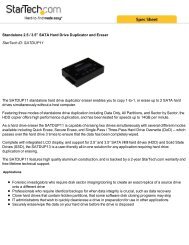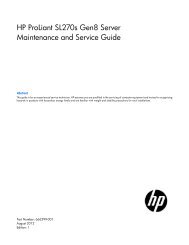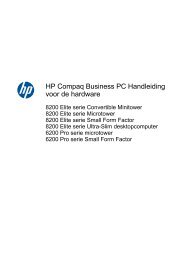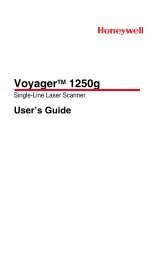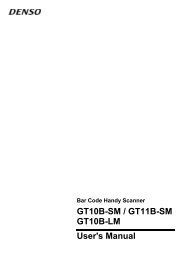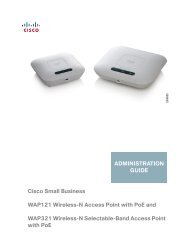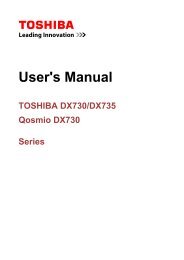User Manual - Etilize
User Manual - Etilize
User Manual - Etilize
Create successful ePaper yourself
Turn your PDF publications into a flip-book with our unique Google optimized e-Paper software.
Note: Approximately 1 to 3 minutes after the server is connected to ac power,<br />
the power-control button becomes active.<br />
2. When the prompt Setup is displayed, press F1.<br />
3. From the Setup utility main menu, select Boot Manager.<br />
4. Select Add Boot Option; then, select Embedded Hypervisor. Press Enter, and<br />
then select Esc.<br />
5. Select Change Boot Order and then select Commit Changes; then, press<br />
Enter.<br />
6. Select Save Settings and then select Exit Setup.<br />
If the embedded hypervisor flash device image becomes corrupt, you can use the<br />
VMware Recovery CD that comes with the system to recover the flash device<br />
image. To recover the flash device image, complete the following steps:<br />
1. Turn on the server.<br />
Note: Approximately 1 to 3 minutes after the server is connected to ac power,<br />
the power-control button becomes active.<br />
2. Insert the VMware Recovery CD into the CD or DVD drive.<br />
3. Follow the instructions on the screen.<br />
For additional information and instructions, see the VMware ESXi Server 31<br />
Embedded Setup Guide a http://www.vmware.com/pdf/vi3_35/esx_3i_e/r35/<br />
vi3_35_25_3i_setup.pdf<br />
Using the remote presence capability and blue-screen capture<br />
The remote presence and blue-screen capture features are integrated functions of<br />
the integrated management module (IMM). When the optional IBM Virtual Media<br />
Key is installed in the server, it activates the remote presence functions. The virtual<br />
media key is required to enable the integrated remote presence and blue-screen<br />
capture features. Without the virtual media key, you will not be able to access the<br />
network remotely to mount or unmount drives or images on the client system.<br />
However, you can still access the Web interface without the key.<br />
After the virtual media key is installed in the server, it is authenticated to determine<br />
whether it is valid. If the key is not valid, you receive a message from the Web<br />
interface (when you attempt to start the remote presence feature) indicating that the<br />
hardware key is required to use the remote presence feature.<br />
The virtual media key has an LED. When this LED is lit and green, it indicates that<br />
the key is installed and functioning correctly. When the LED is not lit, it indicates<br />
that the key might not be installed correctly.<br />
The remote presence feature provides the following functions:<br />
v Remotely viewing video with graphics resolutions up to 1280 x 1024 at 75 Hz,<br />
regardless of the system state<br />
v Remotely accessing the server, using the keyboard and mouse from a remote<br />
client<br />
v Mapping the CD or DVD drive, diskette drive, and USB flash drive on a remote<br />
client, and mapping ISO and diskette image files as virtual drives that are<br />
available for use by the server<br />
v Uploading a diskette image to the IMM memory and mapping it to the server as a<br />
virtual drive<br />
78 System x3200 M3 Types 7327 and 7328: Installation and <strong>User</strong>’s Guide




